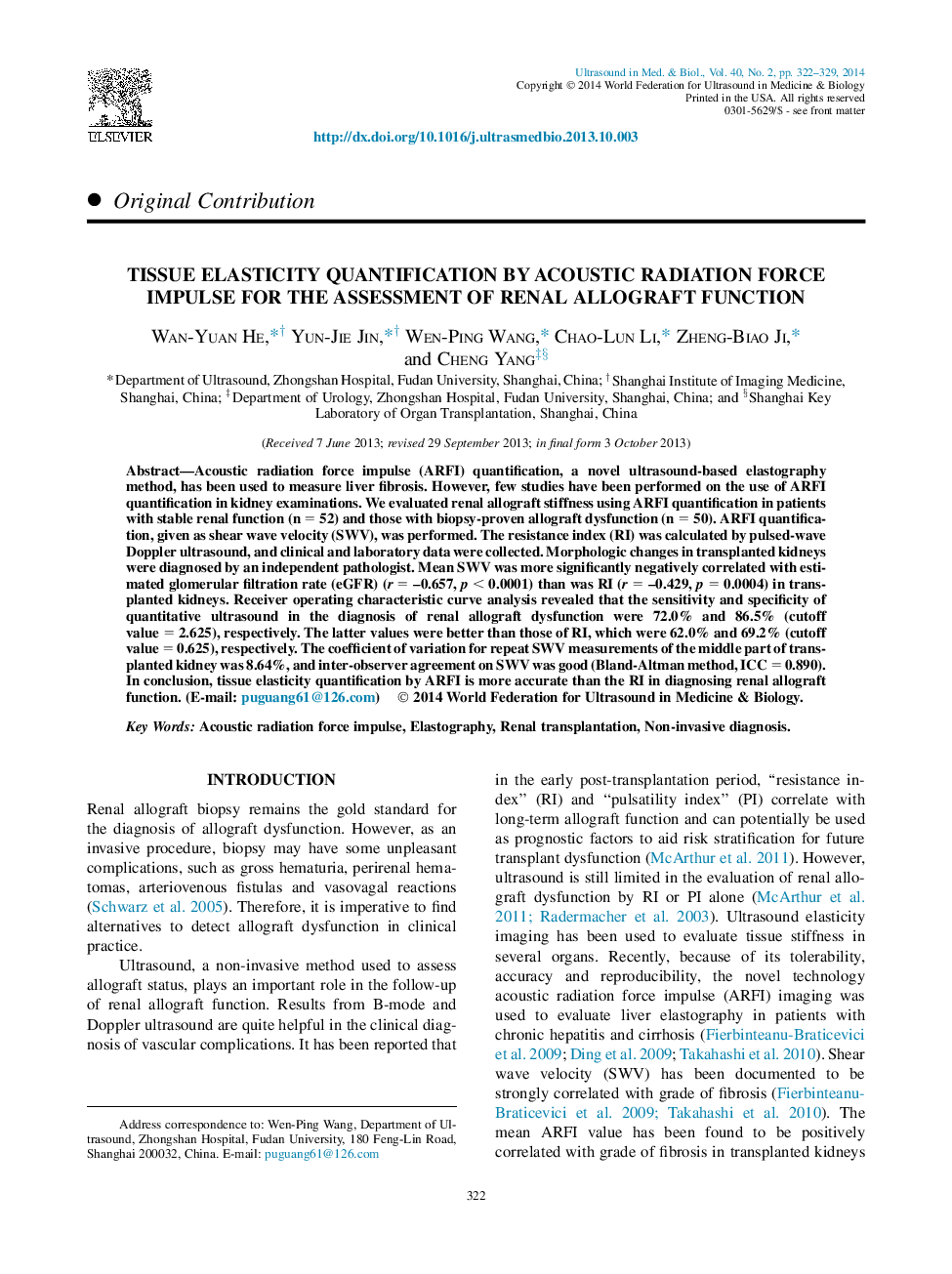| Article ID | Journal | Published Year | Pages | File Type |
|---|---|---|---|---|
| 1760544 | Ultrasound in Medicine & Biology | 2014 | 8 Pages |
Abstract
Acoustic radiation force impulse (ARFI) quantification, a novel ultrasound-based elastography method, has been used to measure liver fibrosis. However, few studies have been performed on the use of ARFI quantification in kidney examinations. We evaluated renal allograft stiffness using ARFI quantification in patients with stable renal function (n = 52) and those with biopsy-proven allograft dysfunction (n = 50). ARFI quantification, given as shear wave velocity (SWV), was performed. The resistance index (RI) was calculated by pulsed-wave Doppler ultrasound, and clinical and laboratory data were collected. Morphologic changes in transplanted kidneys were diagnosed by an independent pathologist. Mean SWV was more significantly negatively correlated with estimated glomerular filtration rate (eGFR) (r = -0.657, p < 0.0001) than was RI (r = -0.429, p = 0.0004) in transplanted kidneys. Receiver operating characteristic curve analysis revealed that the sensitivity and specificity of quantitative ultrasound in the diagnosis of renal allograft dysfunction were 72.0% and 86.5% (cutoff value = 2.625), respectively. The latter values were better than those of RI, which were 62.0% and 69.2% (cutoff value = 0.625), respectively. The coefficient of variation for repeat SWV measurements of the middle part of transplanted kidney was 8.64%, and inter-observer agreement on SWV was good (Bland-Altman method, ICC = 0.890). In conclusion, tissue elasticity quantification by ARFI is more accurate than the RI in diagnosing renal allograft function.
Related Topics
Physical Sciences and Engineering
Physics and Astronomy
Acoustics and Ultrasonics
Authors
Wan-Yuan He, Yun-Jie Jin, Wen-Ping Wang, Chao-Lun Li, Zheng-Biao Ji, Cheng Yang,
